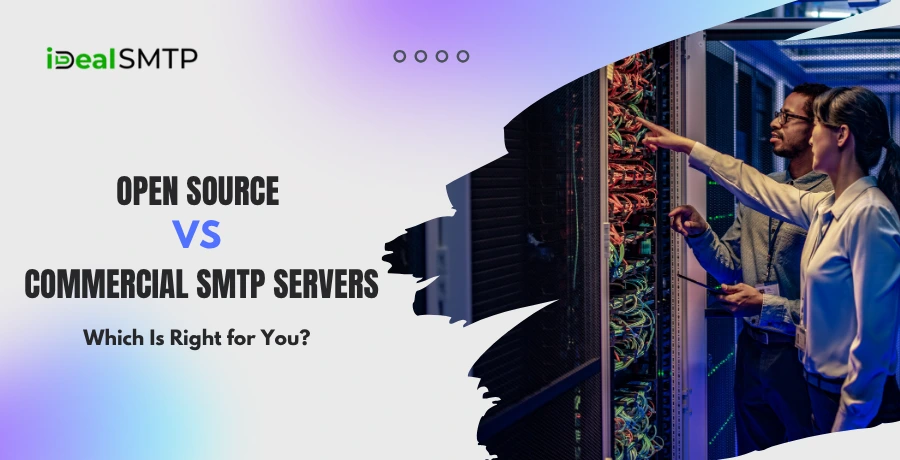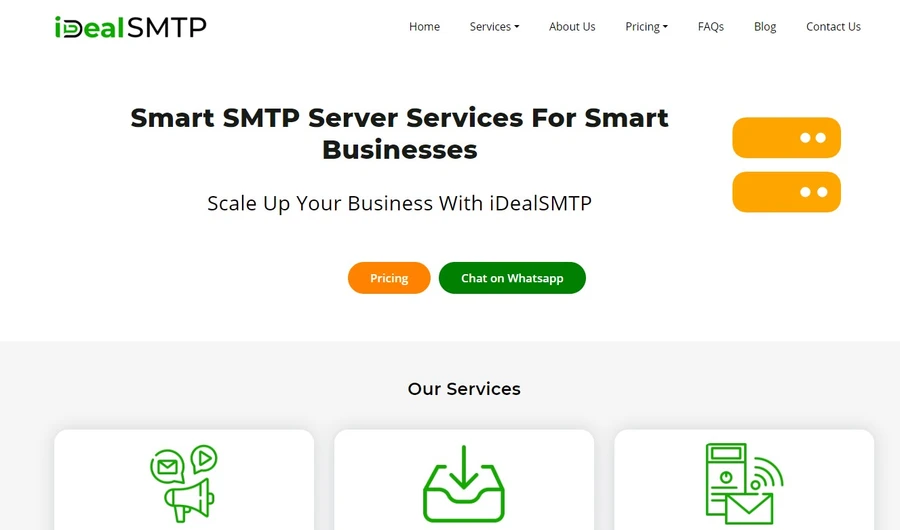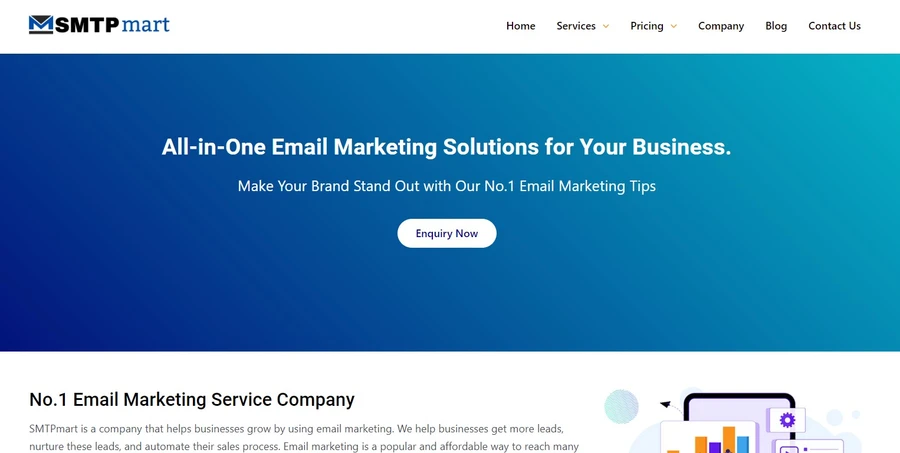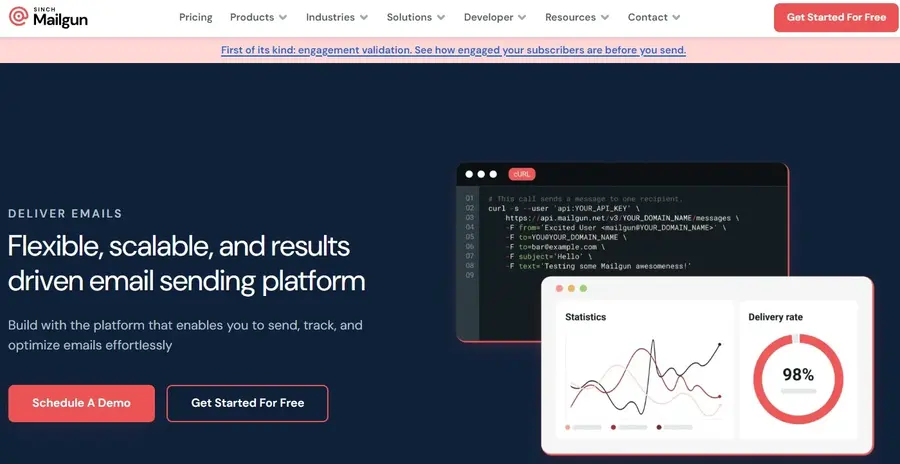Emails are still one of the most powerful ways to communicate in business. Whether you are sending a newsletter, a transactional email like an order confirmation, or even a cold email for outreach, you need something called an SMTP server to send your emails.
But here comes the big question: Should you go for an open-source SMTP server or a commercial (paid) one?

This blog is a complete guide to help you understand the open source vs commercial SMTP servers. It is written in simple English, so even if you are not a technical person, you can understand it easily.
Table of Contents
Pricing
| Trail Plan | Standard Plan | Premium Plan | Professional Plan |
| $50 | $145 | $185 | $225 |
| Sending Limit | Sending Limit | Sending Limit | Sending Limit |
| 1000 Emails/Hour | 1500 Emails/Hour | 3000 Emails/Hour | 5000 Emails/Hour |
What is an SMTP Server?
SMTP stands for Simple Mail Transfer Protocol. It is a set of rules that helps computers send emails to each other. An SMTP server is a computer that follows these rules and helps send emails to the intended recipient. It works like a digital postman, delivering your message to the recipient’s inbox.
Without an SMTP server, you can’t send emails from your website, software, or business systems. It is an important part of email communication.
What Are Open-Source SMTP Servers?
An open-source SMTP server is a free tool that you can use to send emails. It is created and maintained by developers and shared with the public for free.
You can download it, install it on your server, and even change the code if you want. It gives you full control over how the email system works.
Examples of Open-Source SMTP Servers:
- Postfix– A powerful and popular open-source SMTP server used by many Linux systems.
- Exim– A flexible mail server used mostly on Unix-like operating systems.
- Sendmail– One of the oldest SMTP servers, known for its reliability.
- Mail-in-a-Box– A simple, open-source package that makes it easy to run your mail server.
- Haraka– A fast SMTP server written in Node.js for better performance in modern applications.
What Are Commercial SMTP Servers?
A commercial SMTP server is a paid service offered by companies. These services are professionally managed and ready to use.
You don’t need to install or manage anything. You just sign up, use their SMTP settings, and start sending emails right away.
Examples of Commercial SMTP Servers:
Sending bulk emails or transactional emails can be a smooth experience when you choose the right commercial SMTP server. These services help you reach your customers’ inboxes without delays or getting flagged as spam.
1. iDealSMTP
iDealSMTP is a straightforward and budget-friendly SMTP service, ideal for startups, small businesses, and marketers who want to get started quickly.

Key Features of idealSMTP:
- Dedicated & Shared SMTP Servers– Choose as per your budget and sending volume.
- Email Authentication Setup– Includes SPF, DKIM, and DMARC.
- Real-Time Delivery Reports– Track your email performance live.
- IP Rotation & Warming– Helps improve inbox placement.
- 24/7 Support Team– Get help anytime through chat or email.
Why choose it?
It’s perfect for businesses that want strong delivery rates without a complicated dashboard or setup.
3. SMTPmart
SMTPmart focuses on offering cost-effective and ready-to-use SMTP servers for bulk emailing. It’s beginner-friendly and designed for volume.

Key Features of SMTPmart:
- Instant SMTP Server Setup– Start sending emails quickly.
- Multiple Server Packages– Choose based on how many emails you need to send.
- IP Rotation Available– Avoid spam folders by rotating IPs.
- Email Logs & Reports– Know which emails were sent, failed, or opened.
- Affordable Bulk Mailing Plans– Suitable for budget-conscious marketers.
Why choose it?
Ideal for businesses that send thousands of emails daily and want fast, low-cost solutions.
4. Mailgun
Mailgun is a developer-friendly SMTP service known for its flexibility and strong email delivery infrastructure. It’s best for tech teams and SaaS products.

Key Features of Mailgun:
- Powerful APIs– For sending, tracking, and managing emails.
- Email Validation Tools– Clean your email lists automatically.
- Scalable Infrastructure– Handle large email volumes with ease.
- Detailed Analytics– Monitor opens, clicks, bounces, and more.
- Advanced Security– Includes domain-level security and data protection.
Why choose it?
Perfect for apps, websites, and platforms that send large volumes of transactional emails.
5. SendGrid
SendGrid is a well-established name in the email world. It offers both transactional and email marketing services for businesses of all sizes.

Key Features of SendGrid:
- Drag & Drop Email Builder– No coding needed to design emails.
- SMTP Relay & API– For flexible email sending options.
- Delivery Optimization Tools– Smart features to avoid spam folders.
- Analytics Dashboard– See performance by campaign, link, or device.
- Email List Management– Segment, manage, and target your audience easily.
Why choose it?
Trusted by big brands and growing startups who need reliable, scalable, and smart email marketing.
Key Differences: Open Source vs Commercial SMTP Servers
Let’s understand the main differences simply:
1. Cost
- Open Source– It is free to use, but you might need to pay for a server to host it. So, the software is free, but you may have small hosting costs.
- Commercial– You pay a fee based on the number of emails sent. It is a monthly or pay-as-you-go service.
2. Ease of Use
- Open Source– You need to install and configure it manually, which requires technical knowledge.
- Commercial– It is easy to use. You just add their SMTP settings into your app or website and start sending emails.
3. Support
- Open Source– There is no official support. You can only get help from community forums or online tutorials.
- Commercial– You get dedicated customer support through email, chat, or phone to solve your problems.
4. Customization
- Open Source– You have full control over the code. You can change anything to suit your needs.
- Commercial– You use what the company provides. You can’t change how their system works.
5. Security
- Open Source– You are responsible for maintaining the system’s security by installing updates and managing the server.
- Commercial– The company handles all security updates and keeps your emails safe.
6. Scalability
- Open Source– If your email volume increases, you need to upgrade the server or optimize settings manually.
- Commercial– It can scale automatically based on your usage. No technical work is needed from your side.
Pros and Cons of Open-Source SMTP Servers
Pros:
- Free to use– You don’t have to pay for the software. You can save money, especially if your team is small.
- Full control and customization– You can change anything in the system to match your exact needs.
- No vendor lock-in– You are not tied to one company. You can move or change anytime.
Cons:
- Needs technical knowledge– You must know how to install, configure, and manage servers.
- Time-consuming to manage– You need to spend time updating and fixing issues.
- No professional support– You may struggle to find help when something goes wrong.
Pros and Cons of Commercial SMTP Servers
Pros:
- Easy to set up and use– You can start sending emails in minutes. No need to handle servers.
- Reliable support– If you face any issue, the support teams are there to help.
- Better security and uptime– These services offer strong protection and keep your emails running 24/7.
- Scales easily as your business grows– You don’t have to worry about changing anything as your email volume increases.
Cons:
- Monthly or usage-based cost– You have to pay regularly based on how many emails you send.
- Less control over backend settings– You can’t modify how the email system works in the background.
When Should You Choose Open-Source SMTP Servers?
Choose open-source SMTP servers if:
- You have a tech team that can manage the setup– If someone in your team knows how to handle servers, this is a good option.
- You want to save money– If you don’t want to spend on paid services, open-source is free.
- You need full control over your email system– You can build it your way.
- You are okay with handling problems on your own– You should be comfortable searching for answers online if issues come up.
When Should You Choose Commercial SMTP Servers?
Choose commercial SMTP servers if:
- You want something that works out of the box– No setup required, just start sending emails.
- You don’t have technical staff– No one needs to manage the server or fix issues.
- You want peace of mind with support and updates– Someone else takes care of everything.
- Your email volume is high and needs reliability– Great for businesses that send thousands of emails.
Real-Life Example: A Small Business vs a Growing Startup
Case 1: Small Business
An e-commerce business sends 1,000 emails a month. The owner wants to save money and has a developer. They can go for Postfix or Mail-in-a-Box as an open-source option. It saves cost and gives control.
Case 2: Growing Startup
A tech startup sends over 50,000 emails a day. They can’t afford downtime and need fast delivery. Here, using SMTPmart or iDealSMTP makes more sense. They get fast service and good support.
Common Mistakes to Avoid
1. Ignoring Email Authentication
Whether you use open-source or commercial SMTP, always set up SPF, DKIM, and DMARC. These help protect your emails from being marked as spam or fake.
2. Choosing Based on Cost Only
Don’t just pick the cheapest option. Think about how much time, effort, and support you will need.
3. Not Monitoring Performance
Check how your emails are performing. Use tools like Postfix logs or SendGrid analytics to see if emails are delivered successfully.
Final Thoughts
Both open-source and commercial SMTP servers have their place. There is no one-size-fits-all solution. If you are just starting and have some technical help, try open-source. If your business is growing and you need reliability, go for a commercial service.
Think about your budget, your skills, and how many emails you plan to send. Then choose the one that fits best.
Summary Table
| Feature | Open Source | Commercial |
| Cost | Free (except hosting). You only pay for the server or cloud. | Monthly/yearly fee based on email volume. |
| Ease of Use | Needs setup and skills. It may take time to configure. | Plug-and-play, ready in minutes. |
| Support | Community help, no guaranteed response time. | Dedicated support team available. |
| Customization | Fully customizable to meet unique needs. | Limited customization as per service design. |
| Security | You handle security updates and protection. | Managed by a provider with regular updates. |
| Scalability | Manual upgrades are needed for growth. | Auto scaling without effort. |
FAQs
Here are the top FAQs on Open Source vs Commercial SMTP Servers
1. Is open-source SMTP safe to use?
Yes, it is safe if you set it up correctly and follow security best practices. You should update it regularly.
2. Which is better for large-scale email marketing?
Commercial SMTP services are preferable because they offer higher delivery rates and can handle larger volumes.
3. Can I use open-source SMTP with my CRM?
Yes, you can connect your CRM software with an open-source SMTP using its SMTP settings.
4. Do commercial SMTPs offer better delivery?
Usually yes, because they have a strong infrastructure and a better sender reputation.
5. What if I want to switch later?
Switching is easy. You just update the SMTP details in your email software or application.







